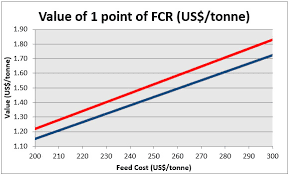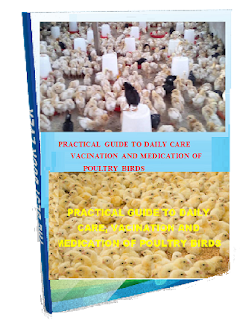How to Improve FCR and Reduce Feed Cost in Poultry
How to Improve FCR and Reduce Feed Cost in Poultry?
In poultry farming, feed efficiency is a main unpredictable
to determine the cost of a kilogram of poultry meat (Duck,chicken, turkey ...).
Depending on the country and species concerned the amount of feed in a
broiler’s ration ranges from 40 to 70% of the rate of production. The Feed
Conversion Ratio, which varies depending on the type of production applied, is
always a very helpful benchmark to establish the profitability of a farm.
Should one aim to increase the revenue of their poultry enterprise, it is important
to know how to improve the Feed Conversion Ratio and how to reduce the feed
costs.
Industrial and economic assessment and monitoring variables in poultry production
The feed conversion ratio (FCR) is the amount of feed
ingested by an animal which can be converted into one kilo of live weight. This
definition also applies to a single-age poultry flock held in an enclosed
house. It is important that this house contains an indication of the amount of
feed that has been eaten. The end of a rearing cycle is a good opportunity to
undertake the technical-economic balance sheet of the cycle taking account of
the following parameters:
The technical
FCR is the total amount of ingested feed divided by the number of animals
that have exited the house
The economic FCR is the total amount of feed
ingested divided by the weight of poultry animals that can be accepted at the
slaughterhouse. That is to say that the weight of seized meat is deducted from
the total weight of goods.
The corrected FCR at fixed weight is the average
ratio of different flocks considering that they have all been slaughtered at
the same weight. In other words, these animals are all brought down to the same
weight through calculations.
The corrected FCR at fixed age is determined by
estimating the weight that these chickens might have reached at the same age,
depending on what they have consumed.
The FCR and hence, the amount of feed ingested, are the
major variables that can help to set the cost of a poultry animal. Depending on
the species and countries considered, the share of feed makes up 40 to 70% of
cost production. Poultry, including broiler, remain the species whose FCR is
the lowest (it can be as low as 1.5). Unlike other species, poultry are not religiously
banned; this is why their consumption has no impediment and their yearly growth
rate averages 3%.
Improving poultry FCR and reducing feed costs
Poultry’s FCR are first determined by the chosen genetic
selection mode and the rearing conditions applied, as follows:
A red label chicken of slow-growing strain
reared outdoors and slaughtered at 81 days will have an average FCR value
ranging between 2.8 to 3.2
A standard
broiler chicken reared in an enclosed house will have an FCR between 1.5
to 1.9.
By comparing these two chickens of different strains
that have been fed with raw materials of same origin, it turns out that the
first chicken will end up costing twice as much as the second.
Despite these differences, FCR calculations are very relevant. Evolving from an initial FCR of 3.2 to 2.8 in the case red label chicken implies that 800 grams of feed have been saved. At the scale of France, these 800 grams, based on one hundred million of red label chicken produced within a year make up 80,000 tons of feed per year. In other words, an amount of 20 million euros (for the prices applied in 2014).
Despite these differences, FCR calculations are very relevant. Evolving from an initial FCR of 3.2 to 2.8 in the case red label chicken implies that 800 grams of feed have been saved. At the scale of France, these 800 grams, based on one hundred million of red label chicken produced within a year make up 80,000 tons of feed per year. In other words, an amount of 20 million euros (for the prices applied in 2014).
Besides the type of farming and genetic selection applied,
the improvement of FCRs lies on various factors:
On the suitable transformation of raw materials, on the
nutritional standards and physical presentation of
feed, on the chosen genetics and the type of farming used.
On the rearing
conditions applied,
animals’ comfort and their access to water and feed.
Any element likely to cause discomfort, difficulties
in accessing water and feed, as well as the animals’ aversion for
specific types of feed, could lead to heterogeneous growth, health issues and
to seizures at the slaughterhouse. The eventual impact may lead to significant
drops in FCRs.
Regardless of the species (chicken, turkey, duck, guinea
fowl) reared, improving feed efficiency is critical when attempting to master
production costs in poultry. Our team of specialists and formulators, our
trials and studies in experiment stations will provide you with solutions for
improving the FCR of any avian species. For more information, please consult
our experts!




Comments
Post a Comment